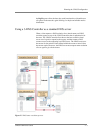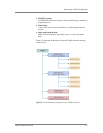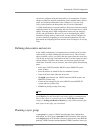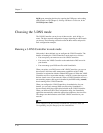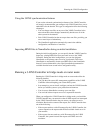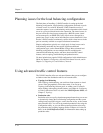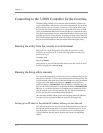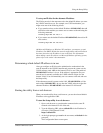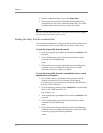
Planning the 3-DNS Configuration
3-DNS
®
Administrator Guide 2 - 11
Using the 3-DNS synchronization features
If you use the advanced synchronization features of the 3-DNS Controller,
we strongly recommend that you configure each 3-DNS Controller to run as
authoritative for the domain. This type of configuration offers the following
advantages:
• You can change zone files on any one of the 3-DNS Controllers in the
network and have those changes automatically broadcast to all of the
other systems in the network.
• Each 3-DNS Controller has the most up-to-date zone files, providing you
one or more layers of redundancy.
• The NameSurfer application automatically controls the addition,
configuration, and deletion of zone files.
Importing BIND files to NameSurfer during an initial installation
During the initial configuration, you can specify that the 3-DNS Controller
import any existing BIND files from your name server to the 3-DNS
Controller. During the initial configuration, you can also designate
NameSurfer as the primary name server for your domain. This forces
NameSurfer to automatically format your BIND files in the NameSurfer
format. For more information, refer to the NameSurfer documentation
available from the home screen in the Configuration utility.
Running a 3-DNS Controller in bridge mode or router mode
Running the 3-DNS Controller in bridge mode or router mode offers the
following benefits:
• You gain the wide-area traffic management capabilities of the 3-DNS
Controller without disrupting your current DNS system.
• In an enterprise, you can install, configure, and test the 3-DNS Controller
before you add the system to your production environment.
• You do not use NameSurfer to manage your zone files.
• You can load balance requests across two separate IP networks.
When you configure the 3-DNS Controller in bridge mode, you install the
3-DNS Controller into your network so that all DNS requests are intercepted
by the 3-DNS Controller before they are sent to your name server for
resolution. Based on the content of the request, the 3-DNS Controller does
one of the following:
• If the request matches a wide IP managed by the 3-DNS Controller, the
system responds to the request with the best available virtual server in
your network.
• If the request does not match any wide IPs managed by the 3-DNS
Controller, the system forwards the request to the DNS server for
resolution.



